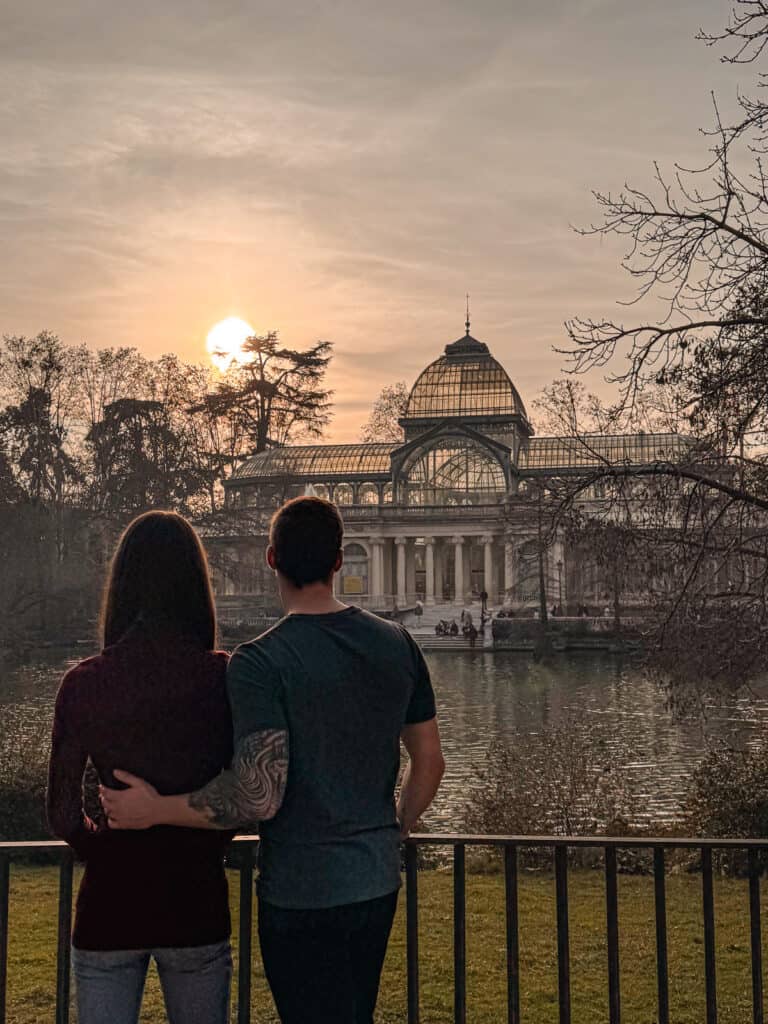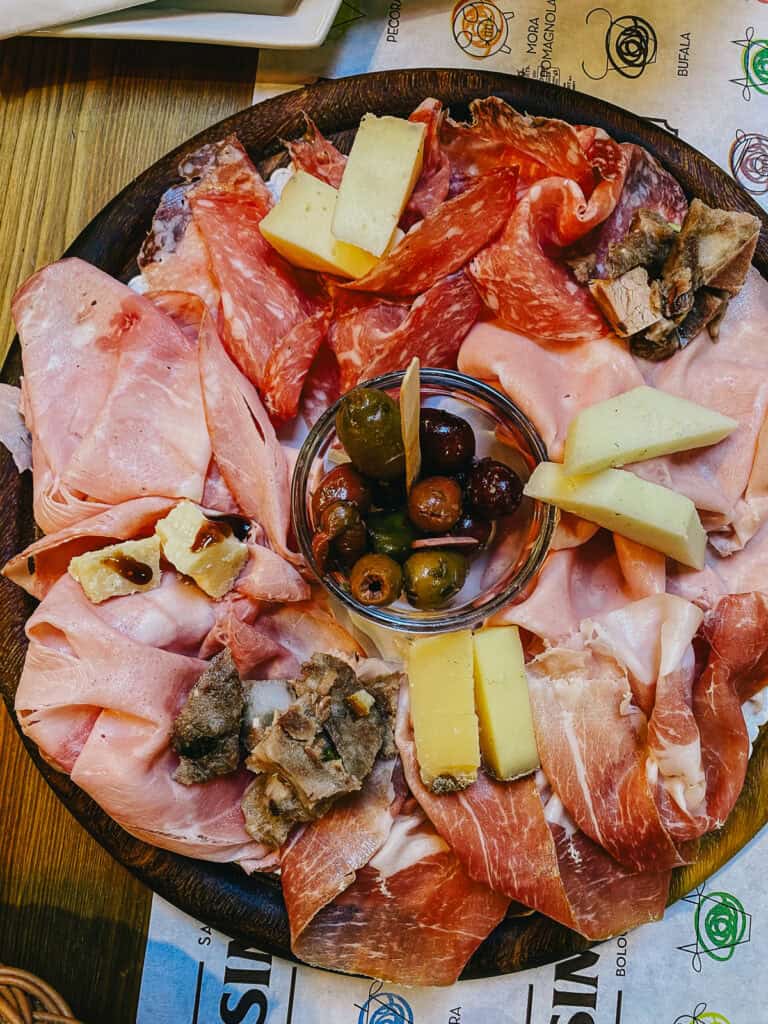A Beginners Guide to Christmas Markets: Practical Tips and Things to Consider
Going to Europe’s Christmas markets can be a super magical experience IF you do it the right way. There aren’t any hard and fast rules, and you *could* just show up and see what happens, but then you may not have the best experience.
In this Christmas market guide, I’ll be sharing what Caleb and I wish we had known before spending 2 months in Europe in the winter and visiting 50+ Christmas markets. Since we visited SO MANY MARKETS, we have a ton of practical Christmas market tips to share as well as some lesser-known, insider guidance on things to consider and how to be more like a local.
Culture Craving Couple contains affiliate links and is a member of the Amazon Services LLC Associates Program. If you make a purchase using one of these Amazon links, we may receive compensation at no extra cost to you. Thanks for supporting us! You can see our disclosure policy.
Practical Tips For Visiting Your First Christmas Market

1. Carry cash and card.
European Christmas markets are getting more “modern,” and many of them took credit cards. However, we still encountered a ton of market stalls that are cash only, so make sure you have cash on hand. We also saw plenty of markets taking Apple Pay, so it might be worth setting that up beforehand if you don’t have it yet.
TAYLOR’S TIP: If you run out of cash, use the ATM fee saver app to find an ATM with the lowest transaction fee. That means more mulled wine for you!

2. Ask for a clean mug.
If you are going to buy the adorable mulled wine shoe mugs to bring home as a souvenir, don’t just take the dirty ones! Go back to the vendor and ask if you can have a clean one before leaving the market for the day!
Now, you don’t have to risk getting mulled wine on your clothes when you back the mugs.

3. But don’t just drink the mulled wine.
While mulled wine is good, there are SO MANY other good Christmas market drinks. Our favorite is “Feuerzangenbowle,” which is essentially mulled wine on booze steroids and ON FIRE. OH YES.
READ NEXT: ULTIMATE GUIDE TO CHRISTMAS MARKET DRINKS

4. Eat outside the Christmas markets.
This was one of the main mistakes we made! We ate almost entirely at Christmas markets for 2 months, which means we had a ton of carbs and sugar and not a lot of healthy or real food. We felt pretty crummy at the end of it.
We suggest only spending one or two days eating all the Christmas market foods and then making sure you prioritize getting some local eats at restaurants. The food will be of higher quality, so you’ll feel better.
TAYLOR’S TIP: food at Christmas markets is also SUPER expensive in most cases, so it won’t cost much more (if at all) to eat better at restaurants sometimes.

5. Share food.
If you can, go to the markets with someone you’re cool with sharing food with. The portions are usually pretty big, and this will allow you to try more different foods!

6. Go to food stalls with a line.
This Christmas market tip sounds counterintuitive because you’re hungry and don’t want to wait, but there’s a reason some stalls have a line: they’re GOOD.
If you are choosing where to eat based on the shortest line, you’re probably going to a stall that doesn’t have the best food. The lines go quickly at most stalls anyway, so get the best eats!

7. Walk the market entirely before buying anything.
This goes for both buying food and buying gifts to bring home. We recommend walking the entire market once so you can see what wares and food are on offer. Then, you can make an educated decision about what to buy and what to eat based on seeing EVERYTHING.
READ NEXT: GUIDE TO SHOPPING AT THE CHRISTMAS MARKETS

8. Scope the market for the best mugs before buying.
You might not know this, but many markets have different Christmas mugs throughout them, all sold at different stalls!
Whenever we had a hankering for a glass of warm, boozy goodness, we walked around all the stalls to see which had the cutest mugs. They’re always right on display, so it’s not a hard task!

9. Know about the Pfand.
The pfand is the deposit you will pay for the mugs and sometimes other ceramic dishes like when we got a plate of noodles in Berlin. You might think you’re getting ripped off when the price is more than what the sign is, but it’s just the deposit.
If you return the mug/dish, you’ll get that deposit back.
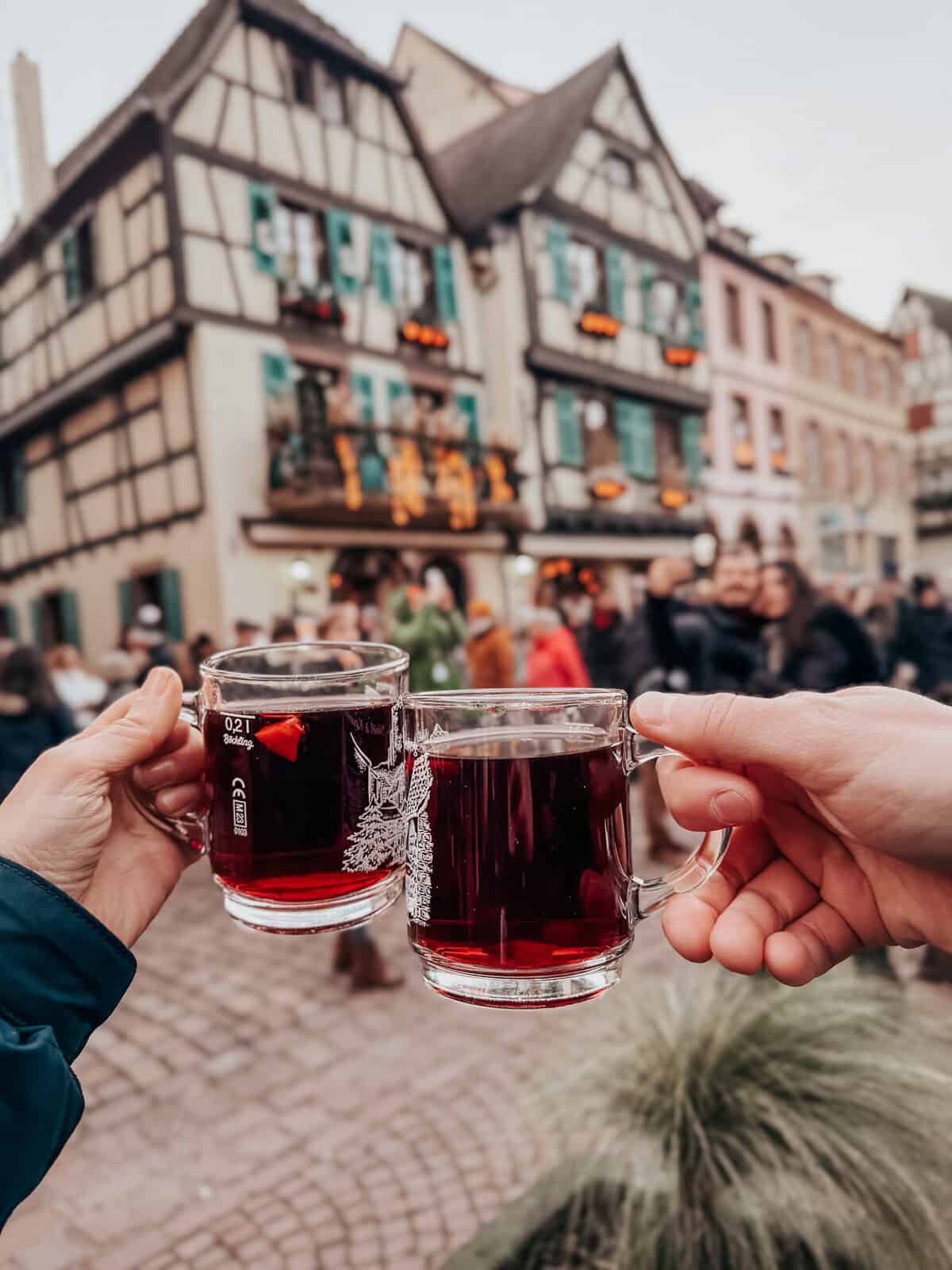
10. Return your mugs ANYWHERE.
If you decide to return the mug instead of keeping it, you can return it to ANY stall that sells mulled wine in that market. It does not have to be the exact one that you got it.
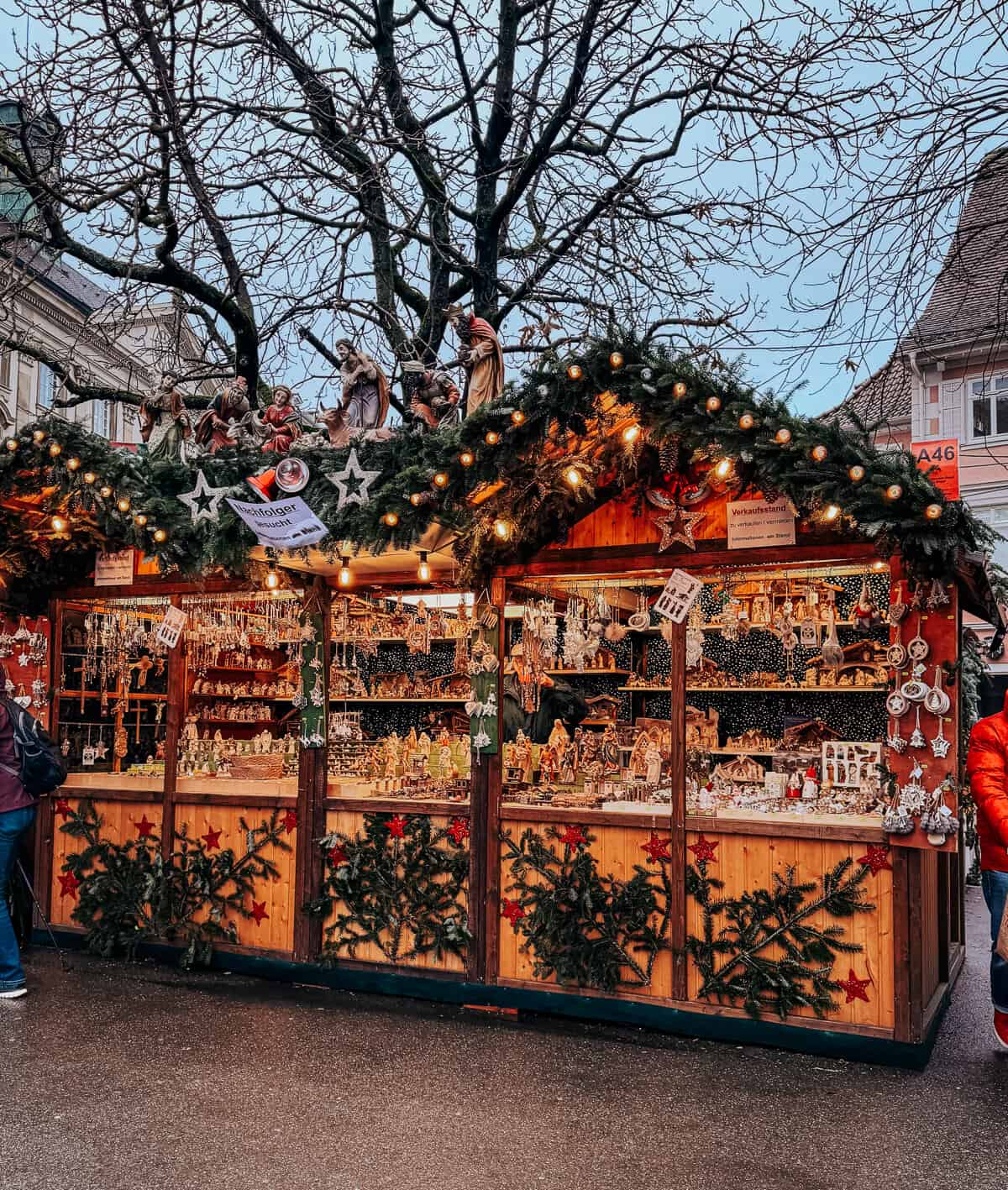
11. Go during the afternoon or early evening.
The best time to visit the markets is during the afternoon or right around sunset. If you go in the morning, it feels a bit “ghost townish,” and nighttime feels REALLY crazy at some of the bigger markets.
Right around sunset is when things are lively and the lights are on so the markets are all pretty, but not super crazy yet.

12. Go during the week.
If you can, avoid weekends. This is when EVERYONE goes to hang out at the markets, and it is an unenjoyable experience. This is especially true in super famous markets like Strasbourg.
READ NEXT: WHEN TO VISIT THE CHRISTMAS MARKETS
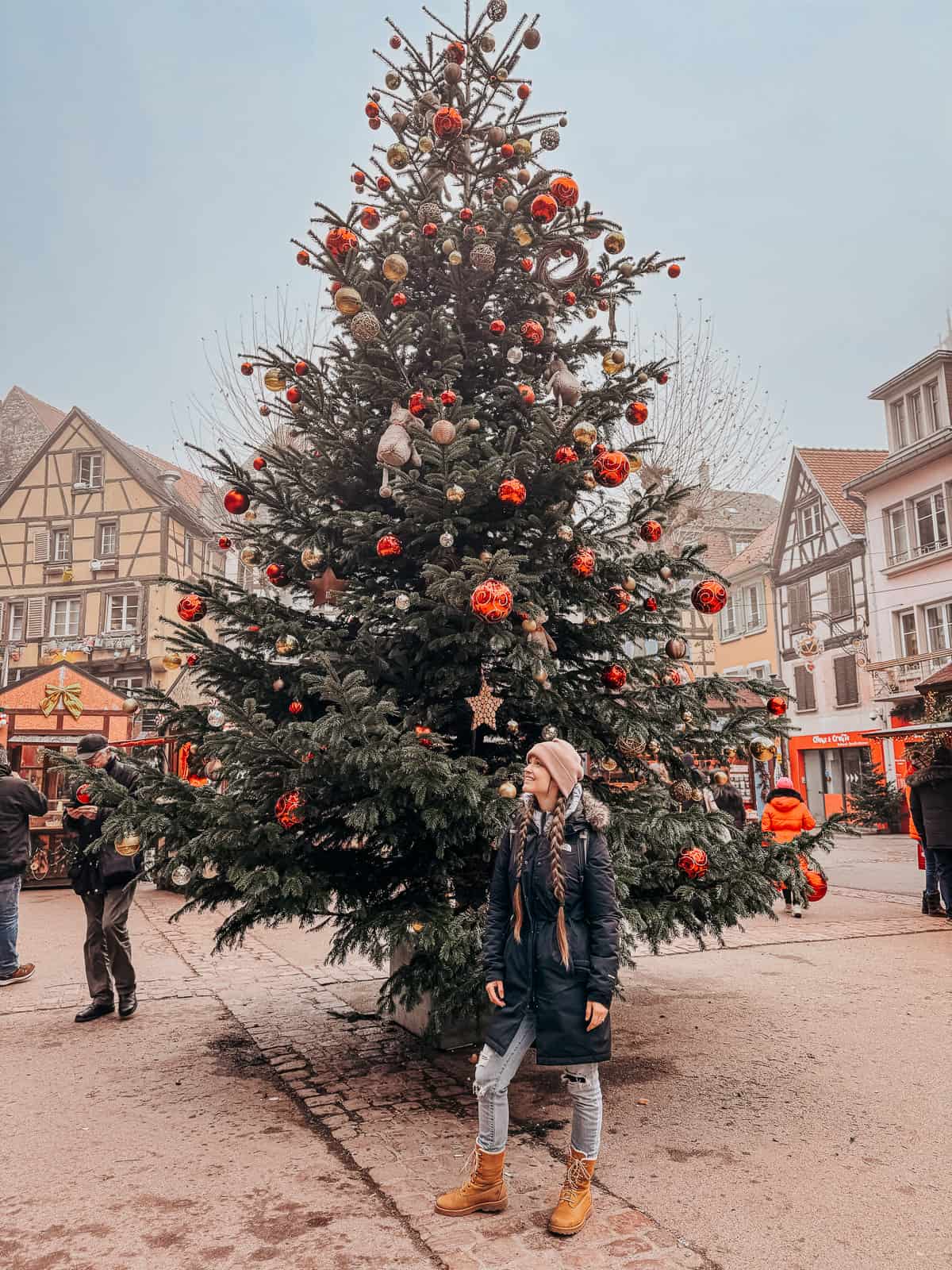
13. Bring a backpack.
You are likely going to buy some things and don’t want to have to carry them around or run back to your hotel every 5 minutes. We recommend bringing a good day backpack that is comfy and can fit what you buy.
14. Know that the local’s “Christmas market exchange rate” kinda sucks.
In some markets where Euros aren’t the common currency (we’re looking at you, Prague), the locals have some sort of secret “Christmas market exchange rate.” If you pay in Euros, you will get totally jipped, so we recommend getting some of the local currency and paying in that.

15. It might be less magical than you think.
This one is kind of a downer, but it is important to mention. If you follow all the Instagram influencers who only share Christmas market photos where it looks like it’s super empty, it’s a lie. I honestly don’t know how they get those photos at some of the bigger markets.
The bigger, more famous markets can be insanely busy, crowded, and expensive. So, just prepare yourself if you’re doing the usual ‘tourist route” and hitting the famous ones. They were quite disappointing for us.

16. Some of the foods are sold by Weight.
Make sure you really pay attention to signage at food stalls because a lot of the food is sold by weight, usually in 100g. If you don’t know, you might just order something, and the vendor will give you the biggest serving, like a whole kilogram, and then you’ll be left with way too much food and a huge bill. This also means food is usually more expensive than it sounds!

17. Set a meeting point for when you get separated.
When we were in Colmar, it was SO BUSY that we got separated in the crowds, AND the cell towers went down because everyone was pinging them too much. So we couldn’t communicate, and it was really scary.
Know where you will meet in advance just in case this happens to you.
Things You Should Be Considering

1. Don’t just plan to go to the biggest markets.
Many people just focus on the massive German Christmas markets when planning their trip, but we found some of them to be the least magical. We strongly recommend you do some research on smaller towns that are lesser known and go there!
We shared a few in our guide to the most beautiful Christmas markets.

2. There can be many Christmas markets in each city.
While each city usually has one or two main Christmas markets, there are usually many small ones all around, so it’s worth doing some research so you don’t miss any. Usually, we found that the smaller ones are the more local ones with the best vibes and most worth visiting.

3. The dates and hours.
Make sure you are visiting the markets when they are open! Only some are open at the end of November. Don’t be like us and go to a city only to find that the markets aren’t open yet like we did in Tallinn.

4. Make a list of must-try foods before going.
So that you know exactly what your priorities are and you can make sure you eat the things that sound best to you. Don’t want you to waste calories or miss out on WORTH IT calories!

5. Make sure your hotel location is near the markets.
The best way to get around the Christmas markets is by walking, so we recommend ensuring your accommodation is close enough to the biggest markets in the city to do so.

6. Book hotels in advance.
Christmas market time is SUPER popular. So, when planning your Christmas market trip, book hotels as soon as possible. We saw some places get up to $500 a night because we waited too long.
We always use this service for booking hotels because it has the best prices and best filters. Pro tip: book on the mobile app because they have special discounts!

7. Your clothes.
It’s VERY important to pack the right layering system and lightweight gloves. The layering system will keep you warm, and the light gloves will allow you to have warm hands while still holding mugs of mulled wine. YES!
READ NEXT: ULTIMATE GUIDE TO CHRISTMAS MARKET PACKING

8. How you will pack to save room for souvenirs.
You’re going to buy things, so ensure to save room in your backpack or suitcase to be able to bring them home.

9. Your shoes. Make sure they are waterproof.
I did not consider this before going and had to buy boots when we got there. You don’t want cold, wet feet.
These are our most recommended travel shoes.

10. Transit time between cities or countries
Don’t fill your trip with markets that you have to waste tons of time driving or on trains/planes getting around to, or that’ll take from your experience. Prioritize cities and countries that are close together.
This is the service we always use for booking rental cars across Europe. You can compare all the vendors side by side to find the best prices and the customer service is always excellent!
How to Experience Christmas Markets Like a Local
Anytime you travel, you should prioritize experiencing the city as a local. Here are some ways you can do that at the Christmas Markets:

1. Utilize the city’s Christmas market website.
Check what cultural events and performances are going on and when they are happening. Time your visit with the schedule so you can attend to these things and experience the market in a deeper, more meaningful way.

2. Look for regional food.
You’ll see a lot of the same foods all over Europe. We recommend doing research on regional specialties and seeking them out.
READ NEXT: ULTIMATE GUIDE TO CHRISTMAS MARKET FOOD

3. Go beyond the markets.
Take the time to explore the surrounding area and discover hidden gems off the beaten path outside the market areas.

4. Learn basic local phrases.
Saying “hi” or “thanks” to the vendors in their local languages shows respect for the local culture, and it’ll go a long way when mingling with locals.

5. Share tables.
Usually, people stand around tables eating and drinking at the markets. Don’t avoid tables with people at them! We met some cool people and made some friends just by squeezing up next to them, and everyone started chatting.
We even became email pals with a cute older couple we met in Heidelberg!
Note: this is easier to do after a few mulled wines!


Now you have all our pro tips for having the best experience! Use these and we know you will love your European Christmas adventure! If you have any questions, just leave a comment and let us know!
Now that you have all the best tips, it’s time to determine which Christmas markets to visit and which to skip! We wrote an ultimate guide on the most beautiful Christmas markets to help you.
And a guide on the worst Christmas markets so you can avoid those!
Other Helpful Christmas Market Posts:
